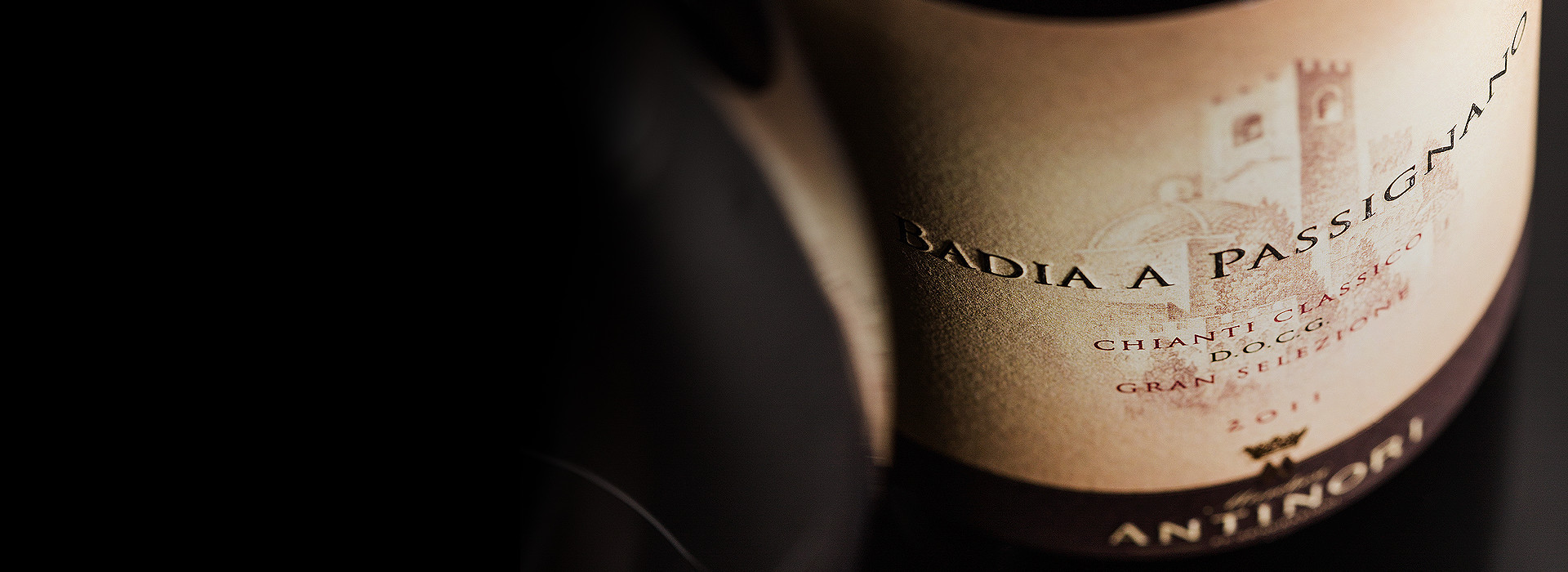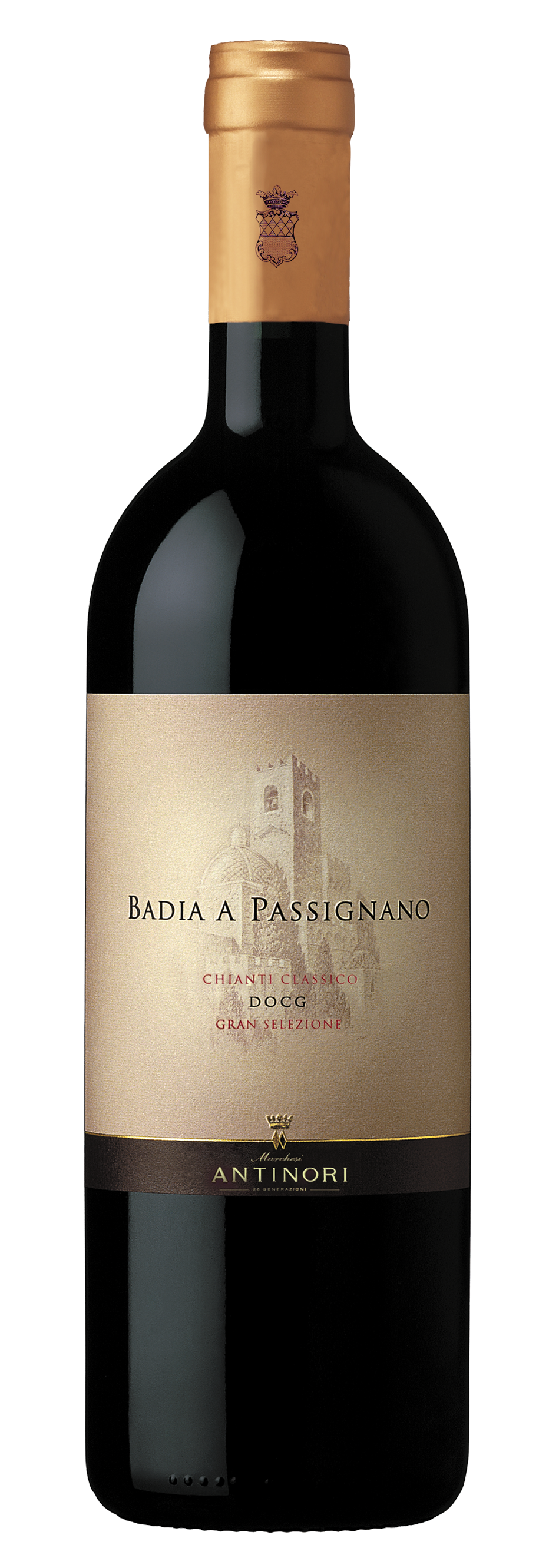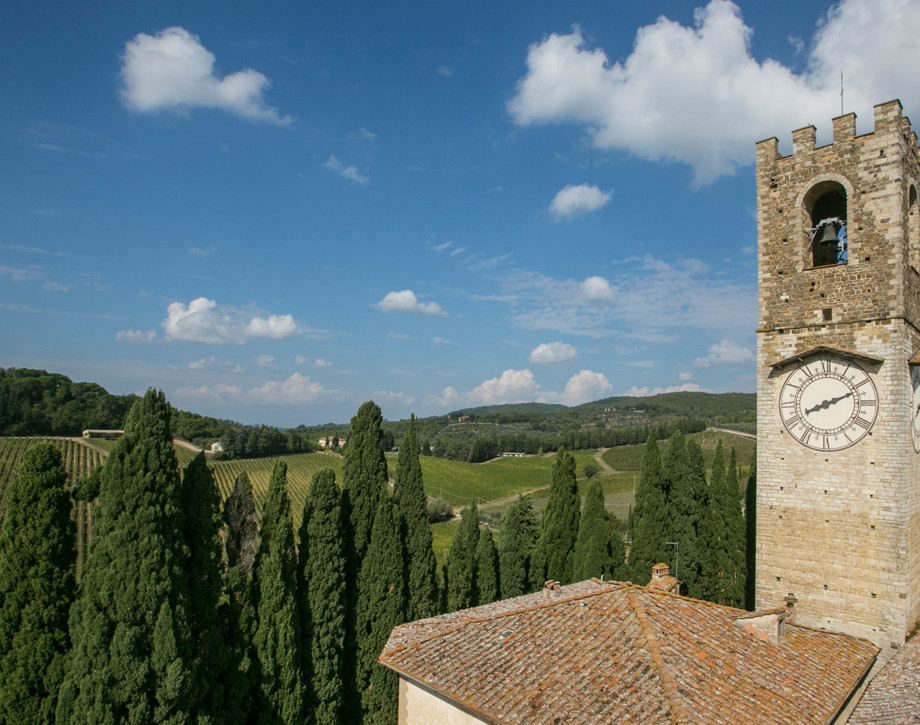Badia a Passignano

Climate
Autumn of 2008 and the following winter of 2009 were characterized by cold and rainy weather; the rainfall of this period guaranteed good reserves of ground water for spring, whose climate was mild with no return of low temperatures. Bud burst, accordingly was regular and arrived in a normal moment in the growing season; late June and early July were marked by rains which gave increased vigor to the vines. Flowering and bud set were regular, even if the rains just cited swelled the berries and bunches, already ahead in their development as they entered the summer season. The vines continued to vegetate vigorously during the summer and encountered a forty day period from early August to September 10th which was very warm and dry. The weather of the second half of September and of October was very favorable, with much sunshine and important temperature swings from daytime heat to evening and nighttime coolness, very helpful for proper ripening. The Sangiovese grapes, carefully selected in the Badia a Passignano vineyard, were picked in late September and, at their arrival in the cellars, already gave the idea of a vintage of very elevated potential. Annual rainfall: 56 inches Average daily temperatures April 1st-October 31st: 71° Fahrenheit (21.7 ° centigrade) Rainfall April 1st-October 31st: 11.7 inches
Vinification
Climatic conditions allowed precisely timed and accurate harvesting operations aimed at bringing out the varying personality and character of the individual plots and parcels, and the timing of the picking, carried out exclusively by hand, was gauged on the basis of exposure, altitude, ripening date, and laboratory analysis of the grapes. The bunches were delicately destemmed and pressed in order to maintain to the maximum extent the aromas and flavors so important in Sangiovese grapes. The grapes macerated on their skins utilizing the softest possible extraction techniques, onces aimed at achieving both intensity and, at the same time, elegance and suppleness in the tannins. From the very beginning of the fermentation, the musts showed the rich colors and ample structure with which they had been endowed by the growing season. The fermentation lasted eight days and was followed by a further ten to twelve day period of skin contact. The wine was then run off its skins and went immediately into Hungarian, and partly French, oak barrels, where by the end of the year it went through a spontaneous malolactic fermentation. After racking, the wine, still divided into small lots, was aged principally in 60 and 80 gallon (225 and 300 liter) Hungarian oak barrels (along with a small percentage of French oak barrels) for a period which lasted fourteenth months. The wine was assembled and bottled at the estate and then given an additional twelve months of bottle aging.
Historical data
Badia a Passignano Gran Selezione is produced exclusively from the finest Sangiovese grapes harvested from its namesake vineyard located in the heart of the Chianti Classico region. The region has been respected and appreciated for its outstanding wine production since the year 1000. The vineyards grow at an altitude of approximately 300 meters (984 feet) above sea level on soils rich in limestone with a fair amount of clay. The wine is aged in the historic cellars under the Badia (abbey) of Passignano that dates back to the 10th century.
Tasting Notes
An intense ruby red with purple highlights, the wine shows a nose with the excellent character of a Sangiovese from Chianti Classico, one with notes of cherries and wild cherries, strawberries and raspberries which mix and mingle with the typical aromas of the oak barrels. On the palate the wine flows softly and pleasurably with tannins which are both felt and supple. Savory and vibrant, the wine is long and lingering on the finish and aftertaste.
Awards
I Vini di Veronelli Super Tre Stelle Italy Vini Buoni d'Italia 4 stelle Italy Wine Advocate 92/100 USA Antonio Galloni - Vinous 92/100 USA Falstaff 91/100 Austria James Suckling 93/100 USA

The Wine
Badia a Passignano Gran Selezione is produced exclusively from the finest Sangiovese grapes harvested from its namesake vineyard located in the heart of the Chianti Classico region. The region has been respected and appreciated for its outstanding wine production since the year 1000. The vineyards grow at an altitude of approximately 300 meters (984 feet) above sea level on soils rich in limestone with a fair amount of clay. The wine is aged in the historic cellars under the Badia (abbey) of Passignano that dates back to the 10th century.

Climate
Autumn of 2008 and the following winter of 2009 were characterized by cold and rainy weather; the rainfall of this period guaranteed good reserves of ground water for spring, whose climate was mild with no return of low temperatures. Bud burst, accordingly was regular and arrived in a normal moment in the growing season; late June and early July were marked by rains which gave increased vigor to the vines. Flowering and bud set were regular, even if the rains just cited swelled the berries and bunches, already ahead in their development as they entered the summer season. The vines continued to vegetate vigorously during the summer and encountered a forty day period from early August to September 10th which was very warm and dry. The weather of the second half of September and of October was very favorable, with much sunshine and important temperature swings from daytime heat to evening and nighttime coolness, very helpful for proper ripening. The Sangiovese grapes, carefully selected in the Badia a Passignano vineyard, were picked in late September and, at their arrival in the cellars, already gave the idea of a vintage of very elevated potential. Annual rainfall: 56 inches Average daily temperatures April 1st-October 31st: 71° Fahrenheit (21.7 ° centigrade) Rainfall April 1st-October 31st: 11.7 inches
Vinification
Climatic conditions allowed precisely timed and accurate harvesting operations aimed at bringing out the varying personality and character of the individual plots and parcels, and the timing of the picking, carried out exclusively by hand, was gauged on the basis of exposure, altitude, ripening date, and laboratory analysis of the grapes. The bunches were delicately destemmed and pressed in order to maintain to the maximum extent the aromas and flavors so important in Sangiovese grapes. The grapes macerated on their skins utilizing the softest possible extraction techniques, onces aimed at achieving both intensity and, at the same time, elegance and suppleness in the tannins. From the very beginning of the fermentation, the musts showed the rich colors and ample structure with which they had been endowed by the growing season. The fermentation lasted eight days and was followed by a further ten to twelve day period of skin contact. The wine was then run off its skins and went immediately into Hungarian, and partly French, oak barrels, where by the end of the year it went through a spontaneous malolactic fermentation. After racking, the wine, still divided into small lots, was aged principally in 60 and 80 gallon (225 and 300 liter) Hungarian oak barrels (along with a small percentage of French oak barrels) for a period which lasted fourteenth months. The wine was assembled and bottled at the estate and then given an additional twelve months of bottle aging.
Historical data
Badia a Passignano Gran Selezione is produced exclusively from the finest Sangiovese grapes harvested from its namesake vineyard located in the heart of the Chianti Classico region. The region has been respected and appreciated for its outstanding wine production since the year 1000. The vineyards grow at an altitude of approximately 300 meters (984 feet) above sea level on soils rich in limestone with a fair amount of clay. The wine is aged in the historic cellars under the Badia (abbey) of Passignano that dates back to the 10th century.
Tasting Notes
An intense ruby red with purple highlights, the wine shows a nose with the excellent character of a Sangiovese from Chianti Classico, one with notes of cherries and wild cherries, strawberries and raspberries which mix and mingle with the typical aromas of the oak barrels. On the palate the wine flows softly and pleasurably with tannins which are both felt and supple. Savory and vibrant, the wine is long and lingering on the finish and aftertaste.
Awards
I Vini di Veronelli Super Tre Stelle Italy Vini Buoni d'Italia 4 stelle Italy Wine Advocate 92/100 USA Antonio Galloni - Vinous 92/100 USA Falstaff 91/100 Austria James Suckling 93/100 USA

Badia a Passignano
Badia a Passignano is located above the town of Sambuca Val di Pesa, just 3 kilometers south of the Tenuta Tignanello estate. The property extends over an area of 223 hectares (551 acres), of which 65 hectares (160 acres) are planted with vines. The vineyards grow at an altitude that varies between 250 meters (820 feet) and 300 meters (984 feet) above seal level on calcareous soil in one of the most naturally endowed and beautiful environments in the Chianti Classico region. The estate’s historical importance in the Chianti region is well documented in hundreds of volumes that are kept in the Florence State Archives that provide descriptions and details about the Sangiovese vineyards and local crops over the centuries. Further proof of this came to light in 1983 when a thousand year old vitis vinifera plant was discovered on the land surrounding Badia a Passignano.

Soil
Predominantly calcareous
















